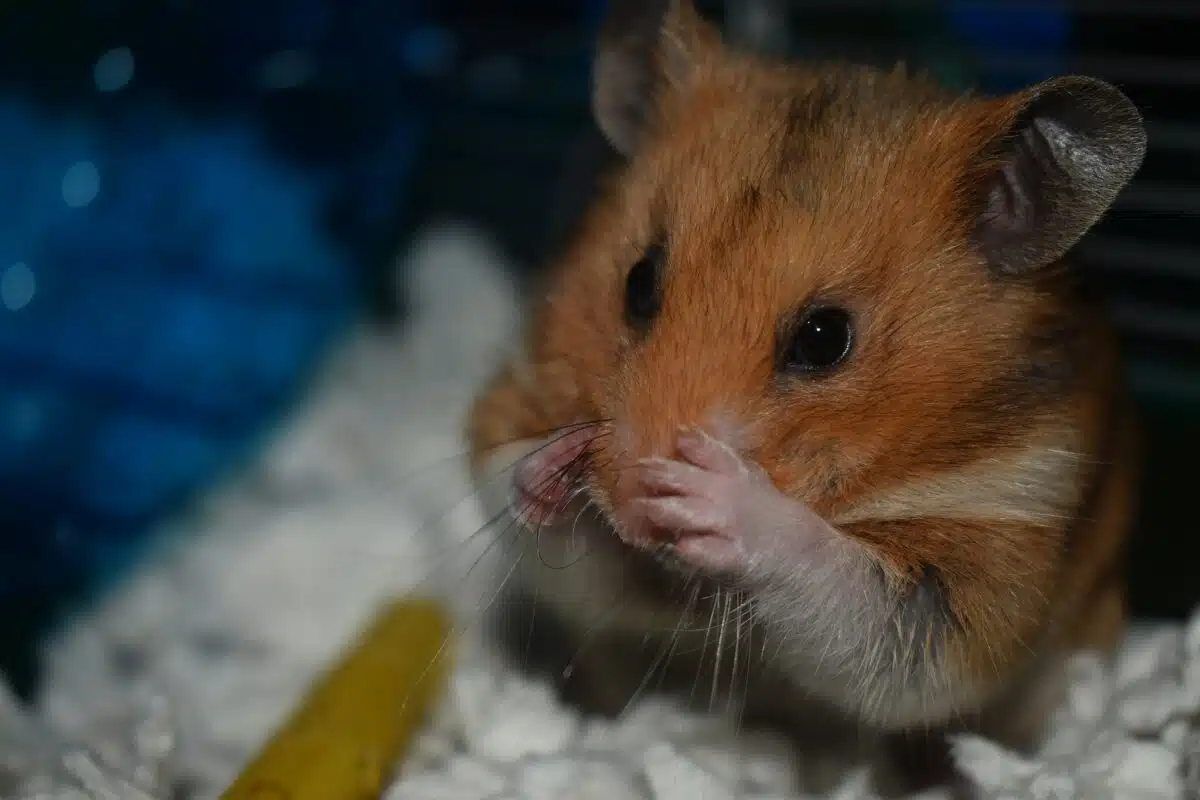Are you looking for a low-maintenance and budget-friendly pet? If so, a hamster ticks both boxes and is also extremely adorable and entertaining to watch.
We’ve compiled all the information you need before purchasing one of these tiny rodents.
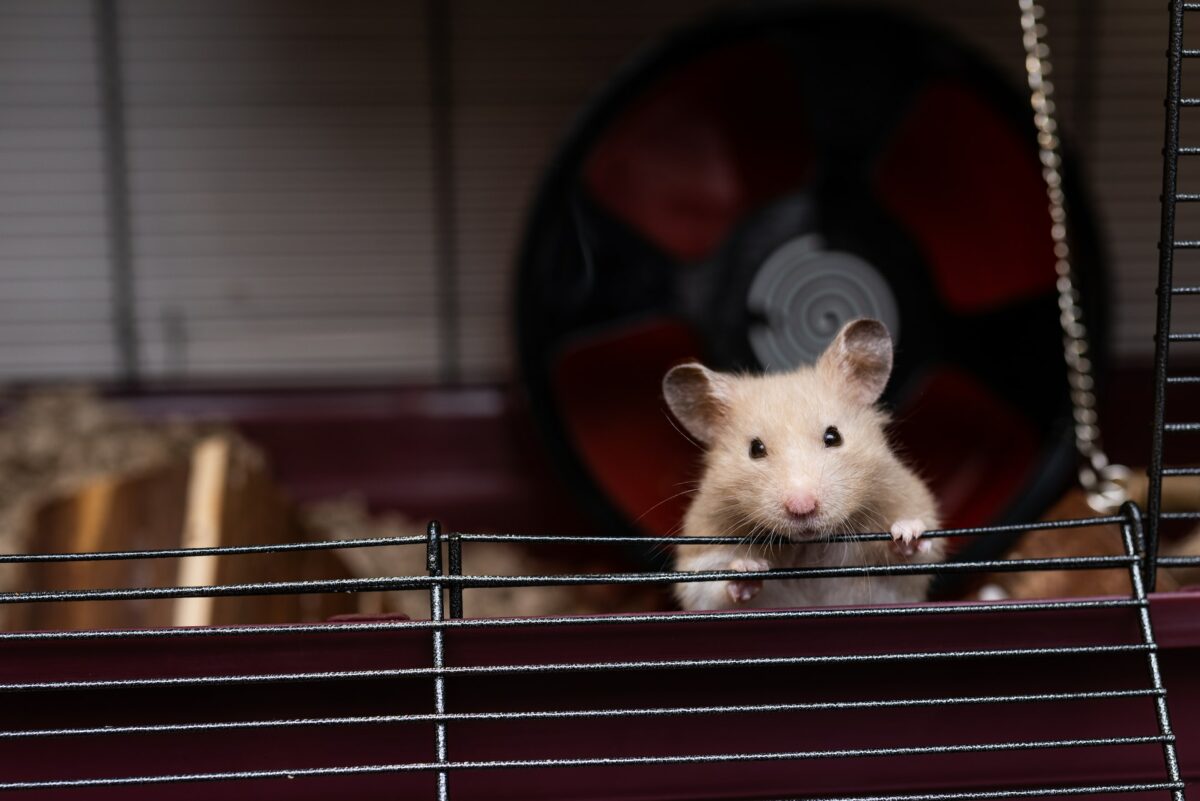
Hamsters are small-sized rodents. They’re very popular as indoor pets. However, unlike most other rodents, they have short tails. They have small ears and stubby legs with widely spaced feet.
Hamsters are found in a variety of colors, including gray, yellow, black, white, brown, golden, and red. They are about 2 to 6 inches long and weigh approximately 6.2 ounces. Moreover, hamsters are adorable and comparatively simple to care for.
If socialized and treated gently, they can become quite affectionate as pets. Therefore, they are quite popular as “pocket pets.” They especially make good pets for children due to their size and manageable requirements.
Taxonomic Classification of Hamsters
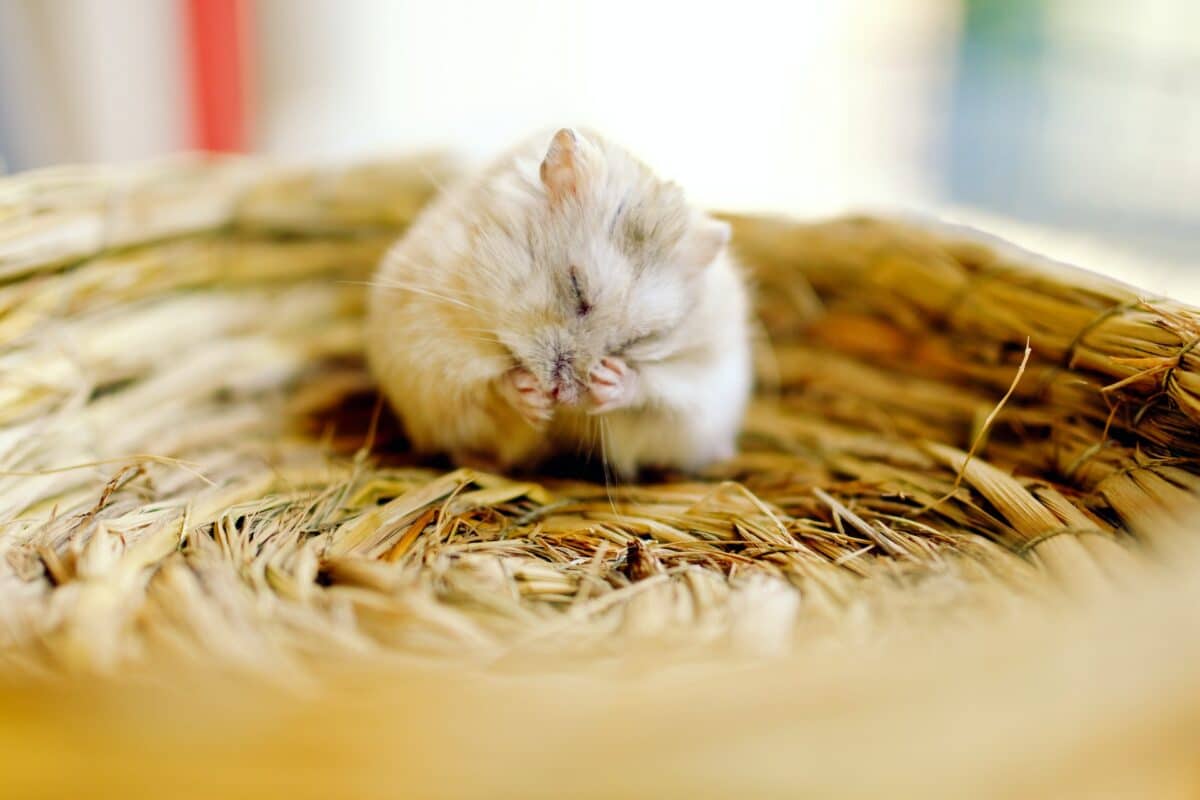
| Kingdom: | Animalia |
| Phylum: | Chordata |
| Subphylum: | Vertebrata |
| Class: | Mammalia |
| Order: | Rodentia |
| Suborder: | Myomorpha |
| Superfamily: | Muroidea |
| Family: | Cricetidae |
| Subfamily: | Cricetinae |
| Genera: | Allocricetulus, Cansumus, Cricetus, Cricetulus, Mesocricetus, Phodopus and Tscherskia |
Species of Hamsters
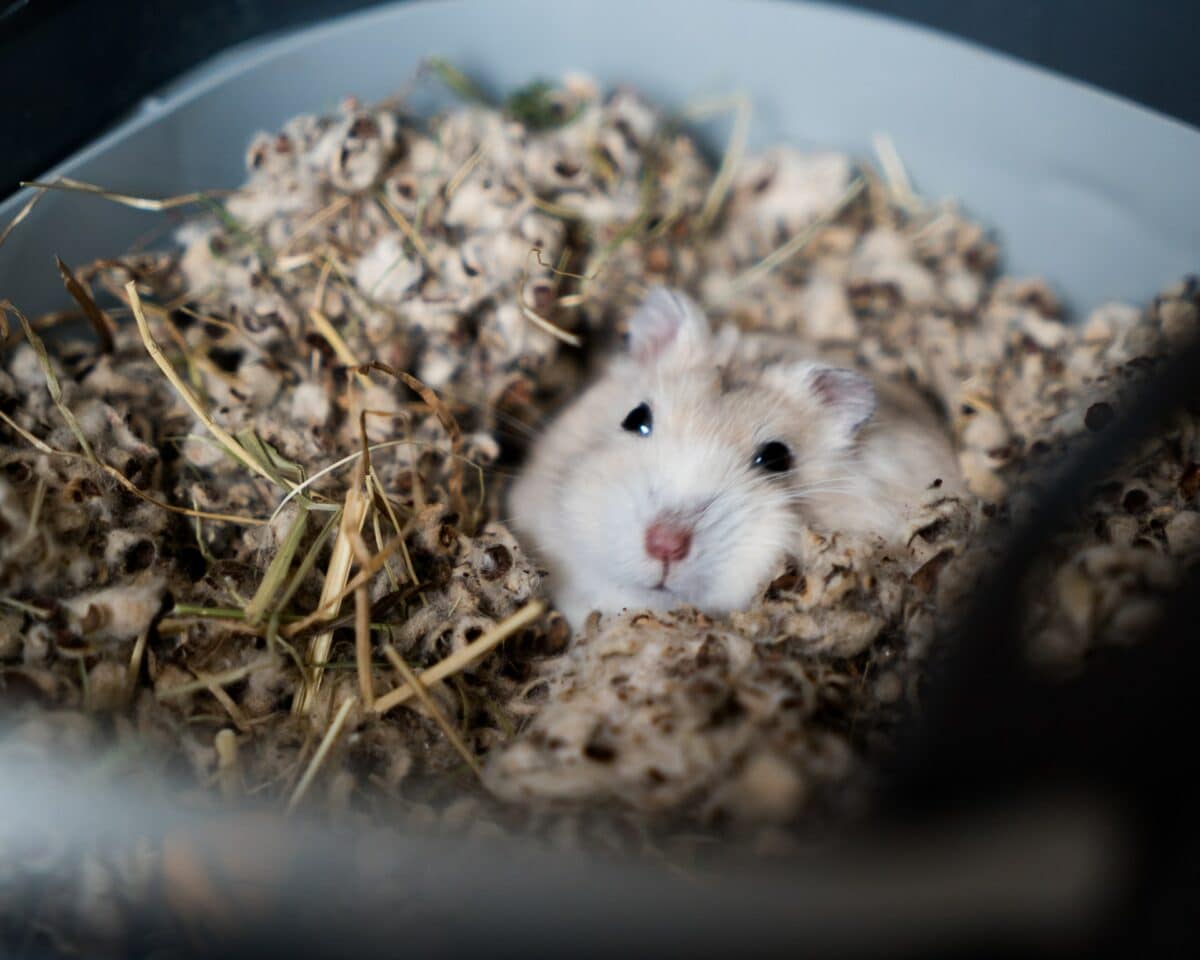
There are around 24 different species of hamsters. However, not all of them are suitable for keeping as pets; only certain hamster species are easy to keep as pets.
For all practical purposes, hamsters can be divided into Syrian hamsters and other species (commonly referred to as “Dwarf” hamsters). Syrian hamsters are solitary animals and should be kept in isolation. Below are the top species of hamster that people keep as pets:
- Campbell’s Dwarf Hamster
- Chinese Hamster
- Roborovski’s Hamster
- Syrian or Golden Hamster
- Winter White Russian Dwarf Hamster
Other species of Hamsters that are not commonly kept as pets include:
- Mouse-Like Hamster
- Rumanian Hamster
- Turkish Hamster
- Ladak Hamster
- Chinese Striped Hamster
- Mongolian Hamster
- Eversmann’s Hamster
- Ciscaucasian Hamster
- Tibetan Hamster
- Lesser Longtailed Hamster
- Armenian Hamster
- Greater Longtailed Hamster
Hamster History
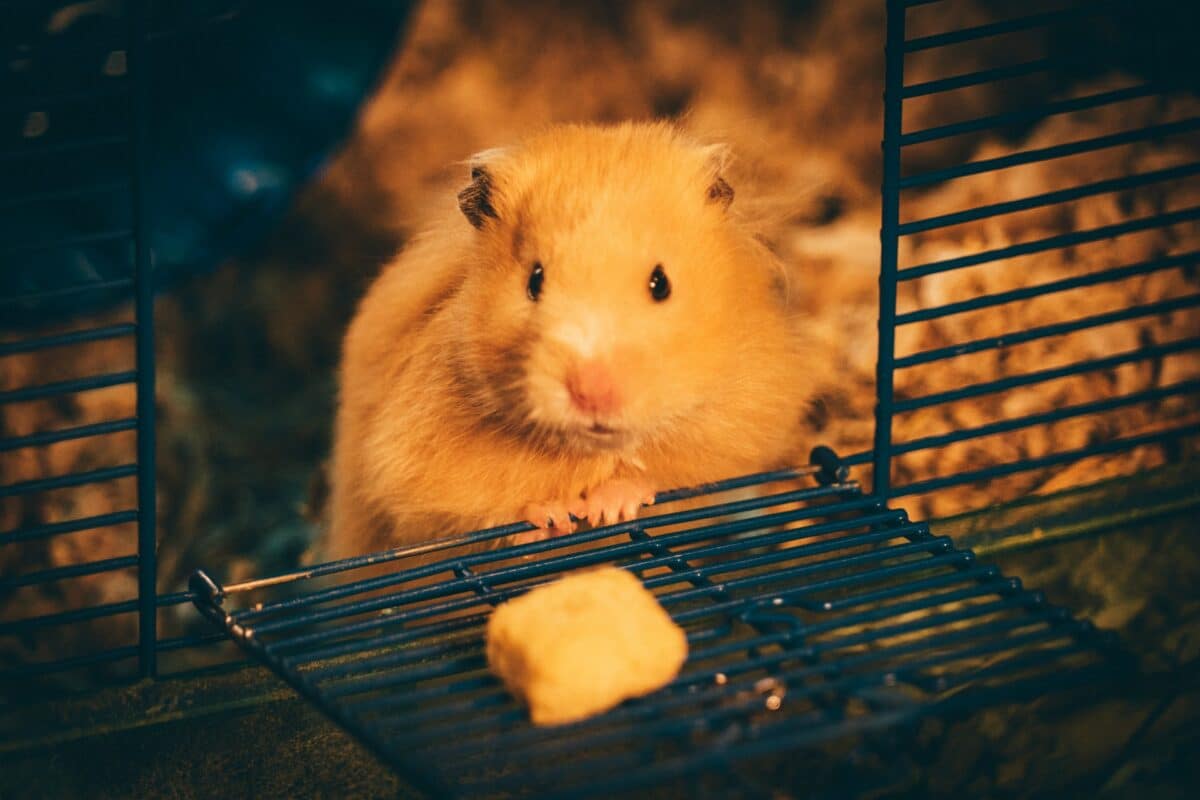
Hamsters were discovered for the first time in Syria, but they are also widespread in Greece, Romania, Belgium, and northern China. G.R. Waterhouse first explained the Syrian hamster in 1839. However, the first group of hamsters was captured in 1930.
They prefer to live in warm, dry places like steppes, dunes, and the borders of deserts when they reside in the wild. Furthermore, hamsters are abundant in Syria and other Middle Eastern nations.
Farmers not only harvest their fields, but they also invade the hamsters’ granaries. Each hamster burrow has a storage area that can hold between 30 and 60 pounds of grain. Hamsters store these grains to use in winter.
Physical Characteristics
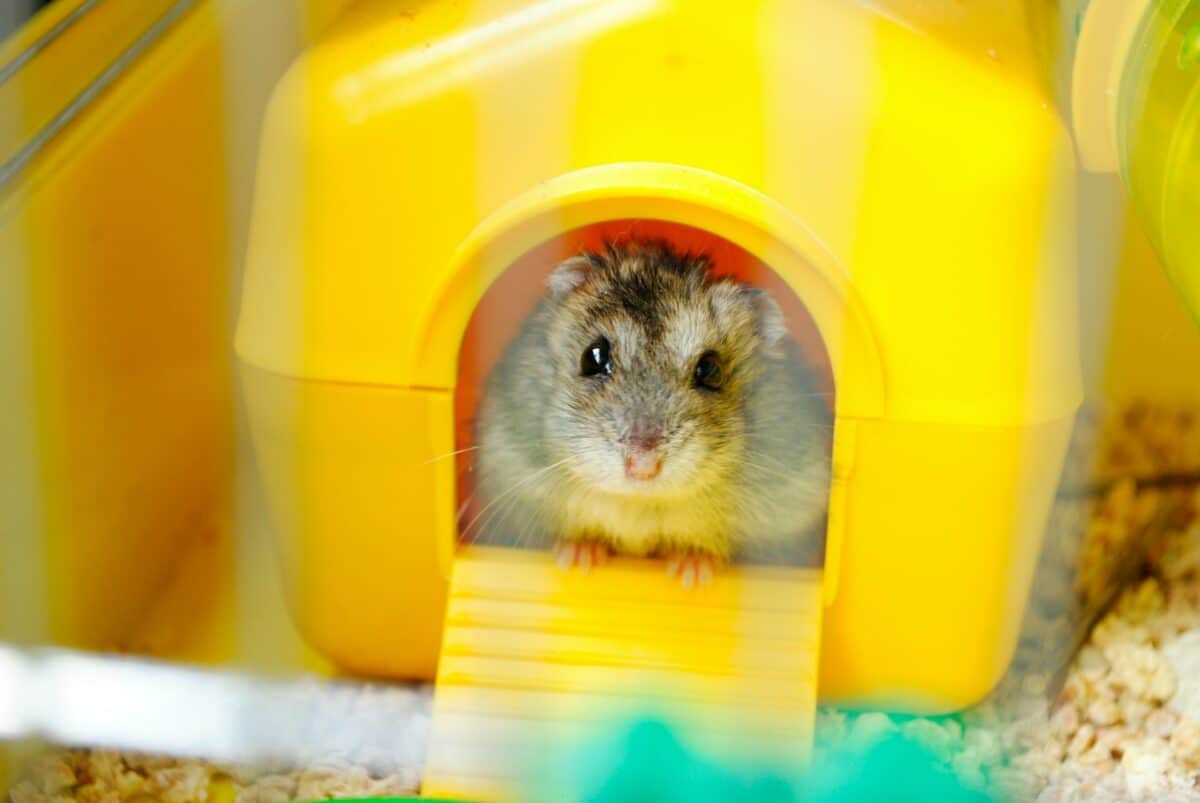
Adult Syrian hamsters measure 2 to 6 inches long and weigh 4 to 6 ounces. Most other hamster species are a little smaller and hence weigh slightly less. Additionally, pet hamsters can live anywhere between 18 months and three years.
The out-pouching of the cheeks, which runs down both sides of the head and neck and back to the shoulders, is a distinctive characteristic of hamsters. These sizable pouches enable hamsters to go on hunting trips in the wild.
After that, they bring the food back to their nest to eat later. Pet owners who notice a fully packed pouch for the first time may think their pet has a rapidly growing tumor or swelling.
Habits and Behavior
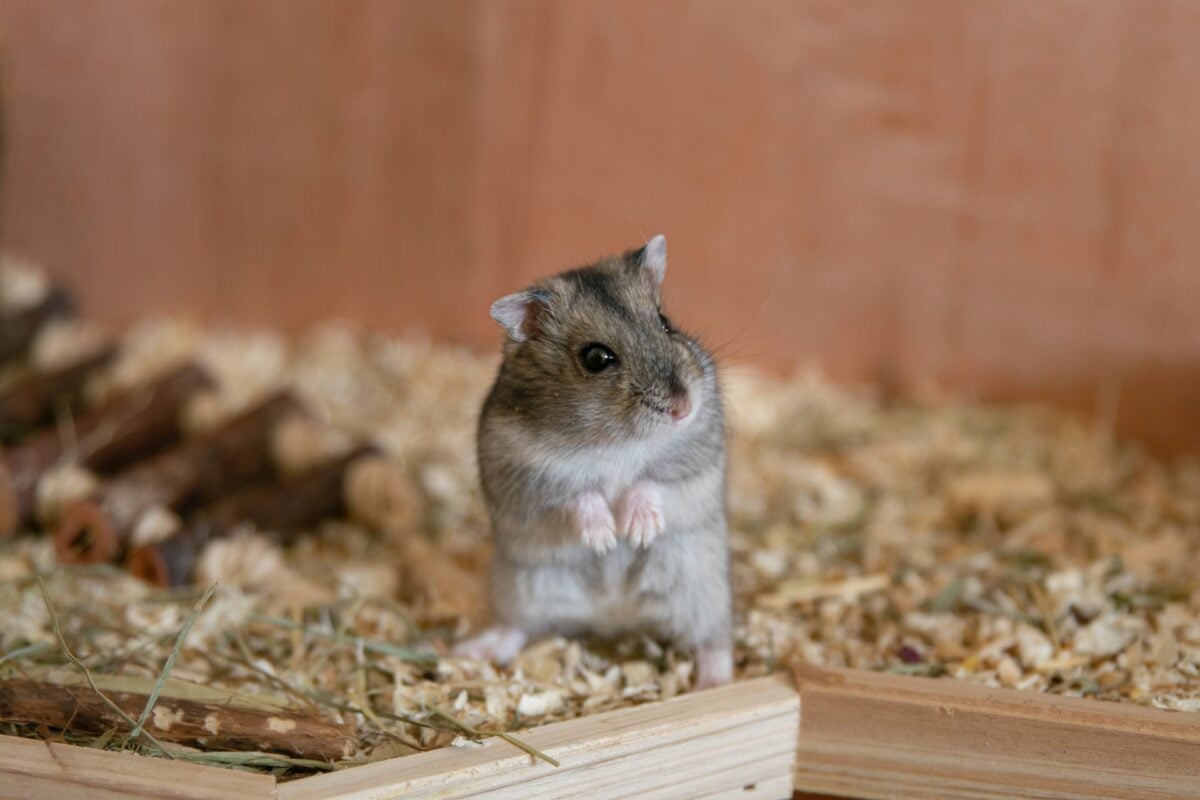
Hamsters prefer to sleep during the day because they are nocturnal animals. Moreover, they create burrows, and networks of tunnels, to live and reproduce in when living in the wild. The burrows of hamsters serve as food storage facilities.
In hot places, wild hamsters stay cool by living underground. Some hamsters prefer to be alone. For instance, the Syrian hamster dislikes staying close to other hamsters. They are territorial and should never be kept in the same cage as other hamsters. Cage-companions will frequently bite each other and sometimes even end up killing each other.
On the other hand, other hamster species can be quite social. For example, dwarf hamsters are social animals that prefer to be around other beings.
If the weather becomes cold enough, wild hamsters will hibernate. Periodically, hamsters will come out of their slumber to eat. If there isn’t enough food stockpiled, hamsters will gather food and only return to hibernating when they have enough.
Diet of Hamsters
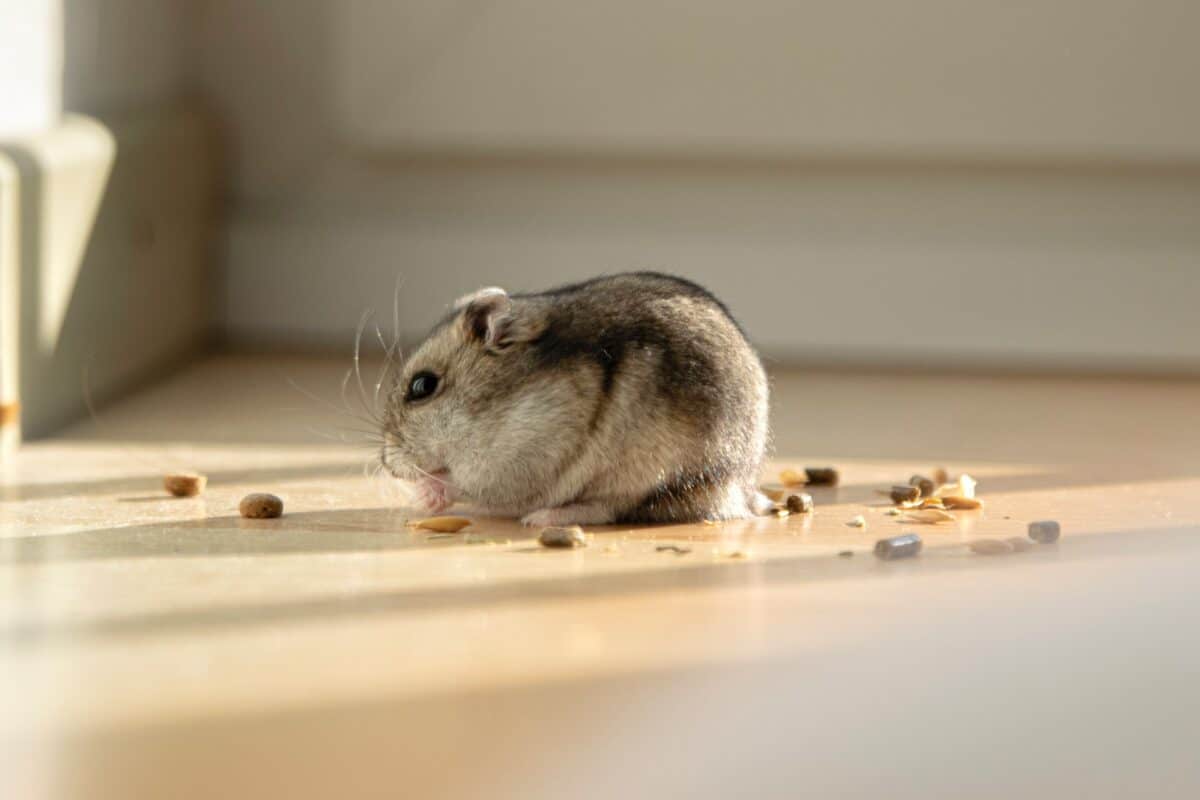
Hamsters are omnivores in the wild. For protein, they consume both plant matter and occasionally insects. They often stuff food into their cheek pouches; this makes it easier for them to get it back to their burrow to consume safely.
Even in the security of a cage, they exhibit this instinctual behavior. Pellets, seed mixtures, treats and fresh foods are all acceptable diets for pet hamsters. Furthermore, the majority of the food consumed by your pet should be hamster-specific and store-bought food.
However, even after limiting your search to hamster food, the selection of food at pet stores can be confusing. The options don’t end until you come home and feed your pet. Here is an overview of foods that are good for your pet hamsters:
#1 Pelleted Hamster Foods
Pelleted food is one of the simplest methods for feeding your hamster. Every bite of pelleted hamster food provides a balanced diet. There are several shapes for pelleted feeds. Typically, they resemble tiny biscuits, cookies, or cereal.
Additionally, almost all hamsters like to nibble on them. Pellets keep hamsters from being fussy and sifting through the food to find favorites while rejecting less-favorite items. These issues commonly occur with seed mixtures.
However, consuming only pellets as a diet has a tendency to get a little boring. Therefore, some hamsters will eventually reject them. Always read the feeding instructions on the packaging. In general, you should feed your hamster a few tablespoons of pellets daily.
#2 Seeds
A combination of seeds is very appealing to hamsters. However, they tend to select their favorites and reject others. As a result, it is good to feed hamsters a diet that includes both pellets and loose seeds.
Moreover, you can select a seed mixture that contains some pellets. A decent hamster seed mix has a variety of materials, such as seeds, grains, and dried vegetables or fruits. The majority have additional vitamins and minerals.
Ensure your hamster finishes the food bowl before giving them more when feeding a loose seed mix. Do not let your hamster consume only foods that it prefers. This can result in a nutritional deficiency. Furthermore, you can provide them with about 1/8 cup of seed mixture daily.
#3 Fresh Foods
Fresh fruits and vegetables are a favorite of hamsters. Your hamster’s diet should consist of 20% fresh food, 75% pellets and seeds, and only 5% treats. Additionally, give your pet a few pieces of clean, organic vegetables every day.
Wash the fresh produce before giving it. Some of the best fresh foods include dandelion greens, kale, romaine lettuce, raw spinach and Swiss chard. Moreover, fresh fruit is a must, but don’t overdo it with sugar. It can cause your pet to gain weight and become too chunky for its own good.
Occasionally, make little offers of apples, berries, bananas, melons, and grapes. However, avoid citrus fruits. Your hamster should eat a little “salad” of fresh veggies daily.
Foods to Avoid Feeding Hamsters
- Apple seeds
- Raw beans
- Raw potatoes
- Almonds
- Citrus fruit
- Garlic
- Onions
- Rhubarb leaves or raw rhubarb
- Chocolate
- Any sugary or salty foods
- Any junk food
- Red meat
Breeding and Reproduction
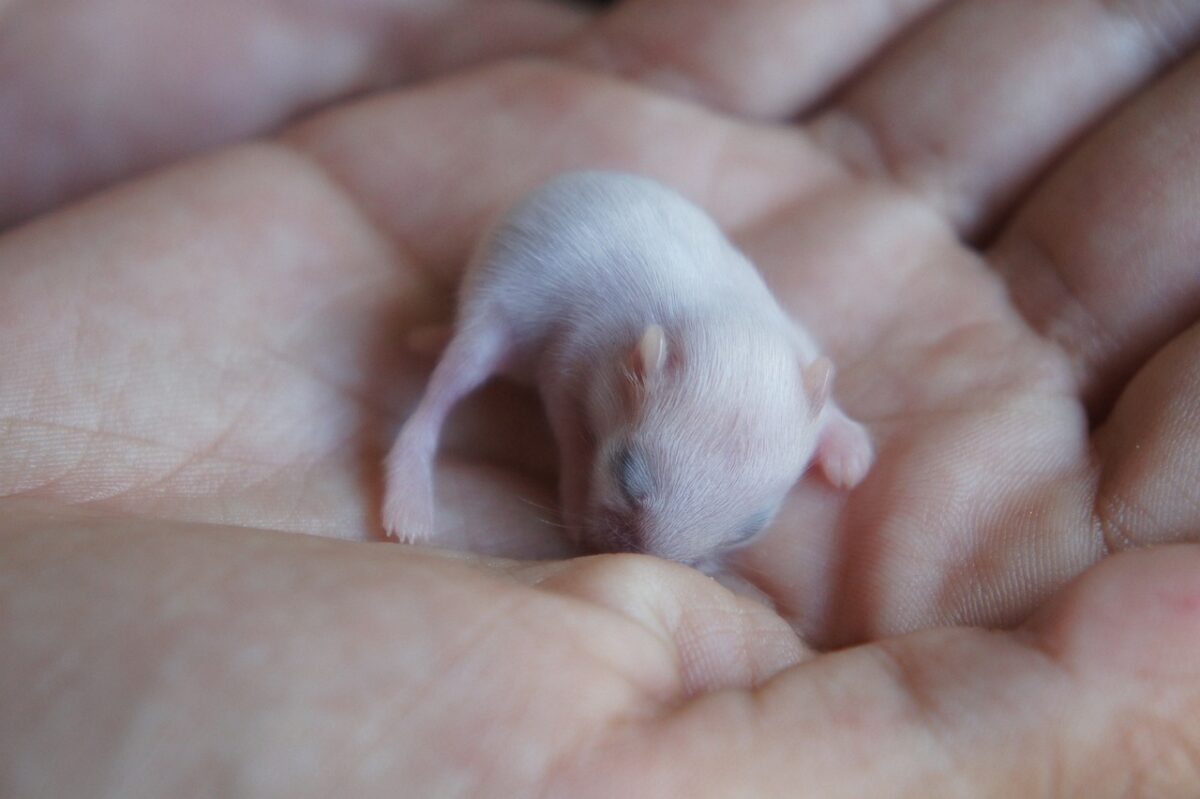
The best time for hamsters to reproduce is between 10 weeks and 15 months old. Furthermore, pregnancies typically last 16 to 22 days, depending on the species of hamster. A pregnant hamster may develop a larger abdomen or girth a few days before giving birth.
Pregnant hamsters could become restless and active as they get closer to giving birth. Sometimes, they might start bleeding vaginally. Additionally, a typical litter of hamsters contains 6 to 8 pups. After roughly 21 to 28 days, the young are weaned.
The pups have closed eyes and ears and no hair. However, puppies are born with their incisors. When the puppies are around seven days old, it is usually safe to slowly start handling them. Puppies can start receiving solid food moistened with water around ten days of age. Moreover, they should have easy access to water.
Breeders use groups of hamsters with one male and several females. Furthermore, it is advisable to leave the breeding of hamsters to expert breeders. It’s because hamsters, especially females, can get hostile when mating. Consequently, neutering your hamsters is highly advisable if you keep two of the opposite sex.
Male vs. Female Hamster
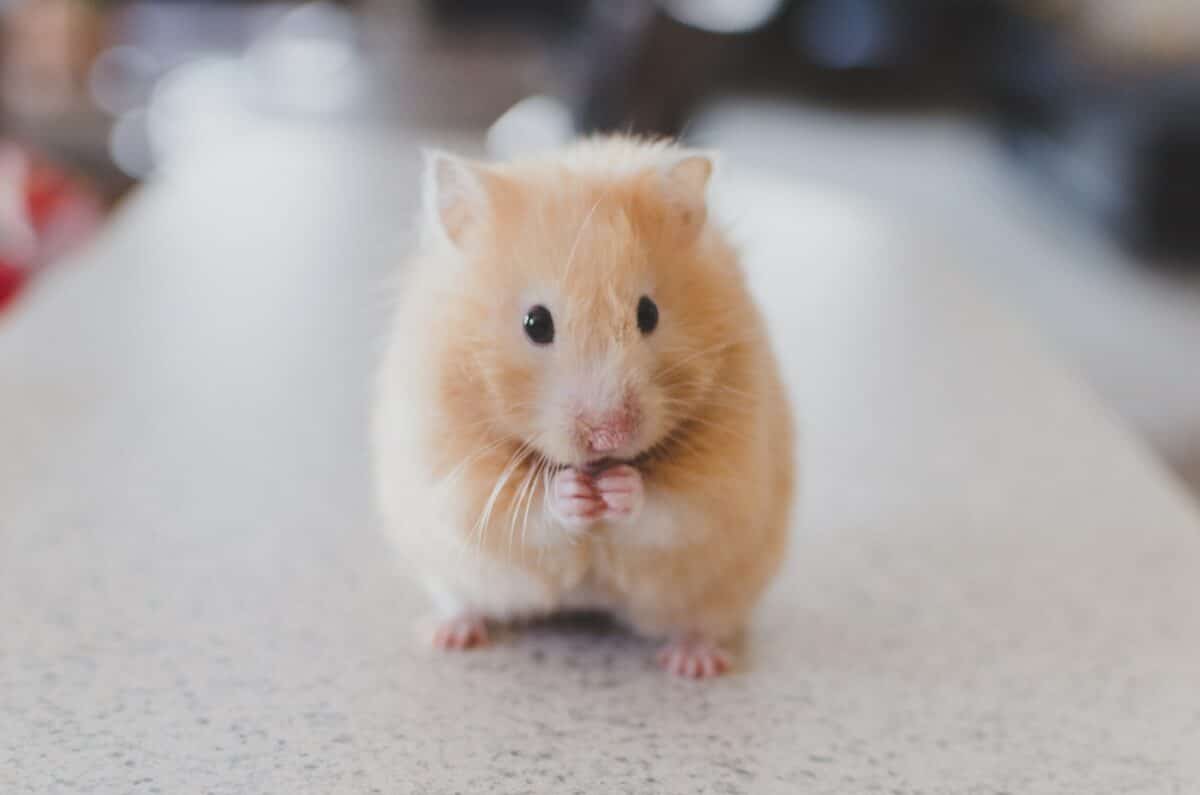
The main differences between male and female hamsters are their physical features, temperament, and behavior patterns. Looking at the anogenital distance is the easiest way to determine if a hamster is male or female. This term refers to the gap between the genital opening and the anus. This area is considerably smaller in female hamsters than in males.
Physical Differences
Male and female hamsters may appear to be the same at first. But upon closer examination, there are some major physical differences. As previously stated, the anogenital distance is the most reliable factor. Additionally, only female hamsters have nipples, which is another indication of their sex.
Moreover, there are some key indicators for sex that vary by species. This can also help you to distinguish between hamster species. For instance, it is much simpler to differentiate between male and female Syrian hamsters because they have very obvious sexual features.
Behavior Differences
Male hamsters are friendlier and more laid-back than females; they are generally calm and obedient. When you enter their personal space to pick them up, they do not show signs of aggressiveness.
For children, male hamsters are the safest option. It is because they are more loving and don’t mind being held or cuddled. Like rabbits, female hamsters are much more dominating than males. Likewise, they are also far more territorial.
Furthermore, female hamsters are aggressive and challenging to handle. Females are also more likely to bite when you reach into their enclosure to pick them up. These factors suggest that female hamsters are not a great option for kids.
How to Identify a Male Hamster?
A variety of physical traits can assist in identifying male hamsters. They lack nipples and have a longer anogenital distance. Additionally, their hind ends are rounder and broader.
The male genitalia is likewise visible after four weeks, though testicles occasionally may retract. Moreover, they may need grooming because their coats are larger and thicker.
Male hamsters’ other physical features vary depending on the species. Male Dwarf hamsters have a visible and much larger scent gland in the center of the belly. Furthermore, male dwarfs are often larger and have more slender hindquarters.
How to Identify a Female Hamster?
Female hamsters have a way shorter anogenital distance than male hamsters. Additionally, their nipples act as their primary distinctive features. On the other hand, various methods to distinguish a female hamster use morphological traits.
Female hamsters emit a musky, disagreeable odor every four days while in heat. Males are typically smaller than females, except for the dwarf hamster. Moreover, females have a less dense fur coat. Other physical traits differ depending on the species.
Do Hamsters Make Good Pets?
Hamsters are excellent house pets since they are docile and easy to care for. They are low maintenance and fun to play with, making them perfect for kids. Here are some factors which make them ideal indoor pets:
#1 Do Not Need Special Training
In comparison to cats or dogs, hamsters don’t need a lot of training. No obedience classes or litter box training are necessary. However, hamsters benefit from routine interaction and handling to get to know you. A hamster might be the perfect pet for you if you seek a lower-maintenance furry friend.
#2 Hamsters are Inexpensive Pets
Purchasing a hamster won’t break the wallet and is additionally cheap in upkeep. However, you must take into account the total cost of all the supplies necessary to keep a happy hamster.
After the initial one-time expenses are paid for, keeping hamsters is not too expensive. The monthly cost of hamster food, snacks, and bedding should be manageable. Of course, there may be unforeseen expenses, such as vet fees, as with any pet.
Therefore, you must be ready for that. Before getting a hamster, find out where the nearest vet is so that you can be prepared if your pet becomes ill.
#3 Cute and Entertaining
Hamsters are small rodents with lovely fluffy characteristics. It’s fun to watch these adorable animals play and groom themselves. Each hamster has a distinct personality, whether exercising in a ball or running in their wheels.
Watching them enjoy their favorite activities can provide great fun and is definitely entertaining for children as well. Moreover, it will keep your children busy and engaged, keeping them away from TVs and ipads.
#4 Great Pets For Night Owls
Hamsters are nocturnal, which means that they are most active at night. Despite the potential for criticism, this is ideal for anyone working late. When everyone else is in bed, hamsters can be your late-night movie companion or friend during these quiet times. Consequently, a hamster can make the ideal companion for a night owl.
#5 Require Minimal Space
Unlike dogs and cats, hamsters don’t require much space to live. You can easily make room for a hamster cage on a desk or dresser. As a result, they are the ideal pet for people who live in small homes or apartments.
But don’t be afraid to let your hamster out for some fun. Hamsters like exploring when given the proper care. A hamster ball is a perfect way to help them release some energy. It will bring you much joy to watch them investigate and uncover new things.
#6 Don’t Require Constant Attention
Hamsters are usually happy to be left alone in their cage if they have ample space and engaging toys. A happy hamster does not demand much time for training, daily walks, or long grooming sessions.
They don’t require the same level of care and interaction with people as dogs and cats. But remember that not socializing your hamster can make it more hesitant or timid.
#7 Easy to Clean up After
Hamsters are clean creatures. So, you will rarely have to bathe them unless you have to clean something off them. They are generally careful about personal hygiene, so they regularly clean themselves to keep themselves tidy.
Additionally, it is adorable to watch them do their tiny cleaning rituals. Also, hamsters are great housekeepers. They usually choose a specific part of their cage as their bathroom. This keeps the rest of the cage very clean. In contrast to other rodents, this makes cleaning up their house simple.
Hamster Key Facts
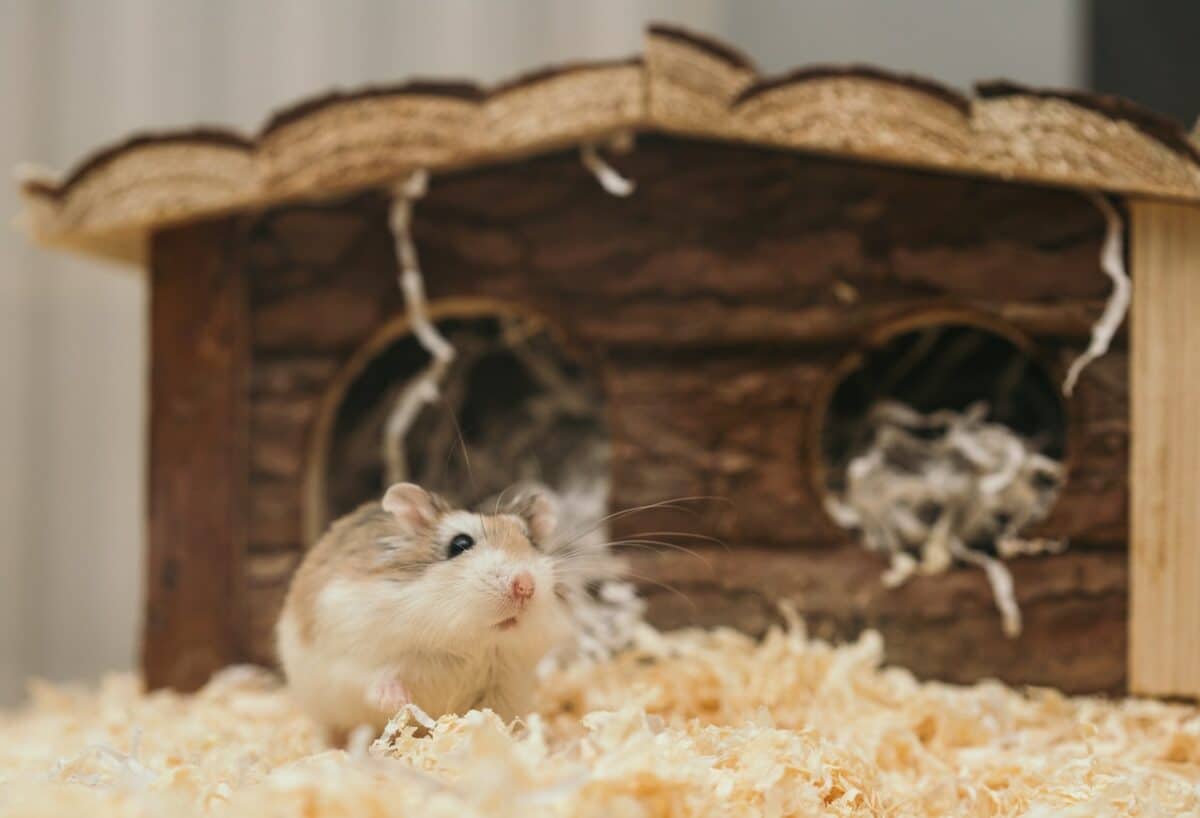
| 1- | Hamsters make good house pets because they are very gentle and easy to take care of. |
| 2- | Hamsters are small rodents with stout bodies, and their feet are wide apart. |
| 3- | Most hamsters are active during dusk and night and need plenty of space to play at night time. |
| 4- | The first Hamster was found in Syria. However, they are widespread in northern China, Romania, and Greece. |
| 5- | The primary diet of Hamsters includes seeds, nuts, grains, fruits, vegetables, and cracked corn. |
| 6- | You can differentiate a male and female Hamster by their anogenital distance, which is much shorter in females. |
Conclusion on Hamster
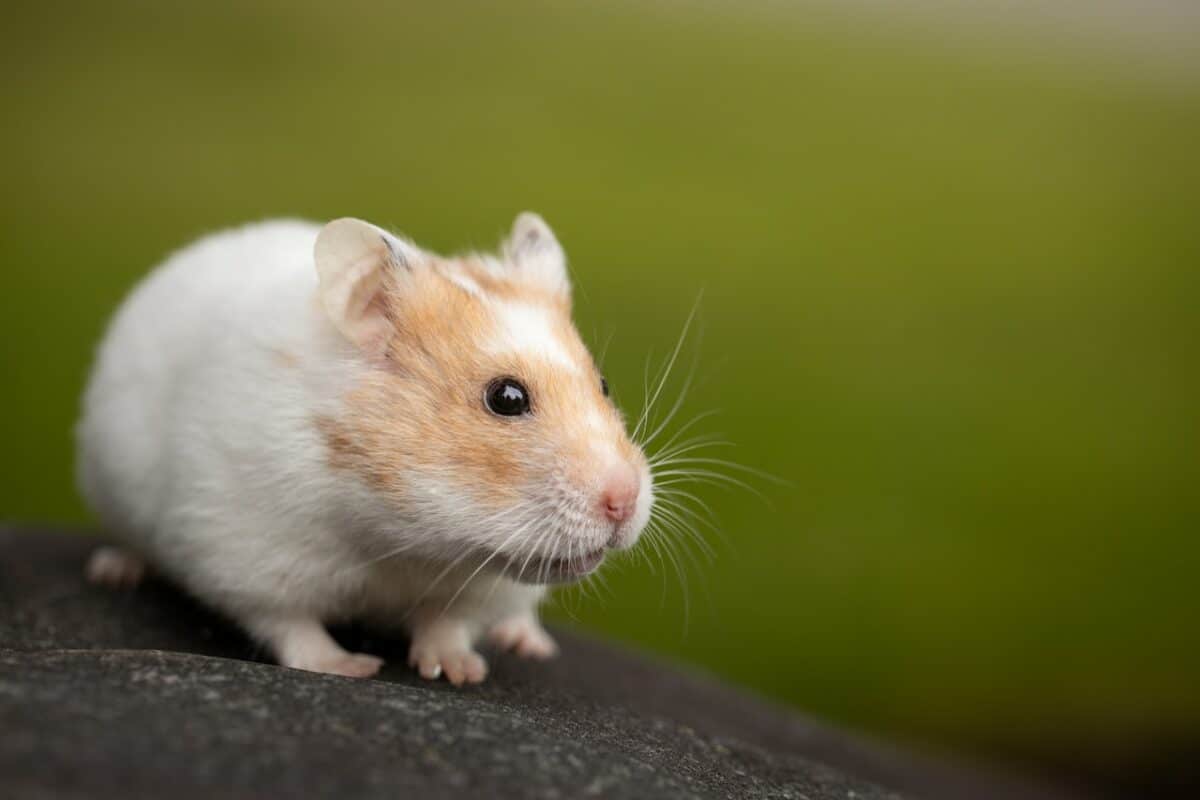
Hamsters make great house pets due to their friendly nature. They are affordable and simple to maintain. Hamsters can bite when they are terrified or disturbed while sleeping. They also have very bad eyesight, and their feet are far apart.
Their teeth keep growing and are short only because they keep chewing on things. Because of their endearing nature, it is not surprising that they are popular as pets.
However, they are very sensitive and can easily get anxious. Therefore, giving them a secure and comfortable place to live is crucial. It will make it possible for them to enjoy a long and healthy life.
Thank you for reading this article! If you want to continue learning about the many rodents that inhabit our planet, head over to read our comparative article on the Vole vs. Mouse.
Join our Forum for free today!


